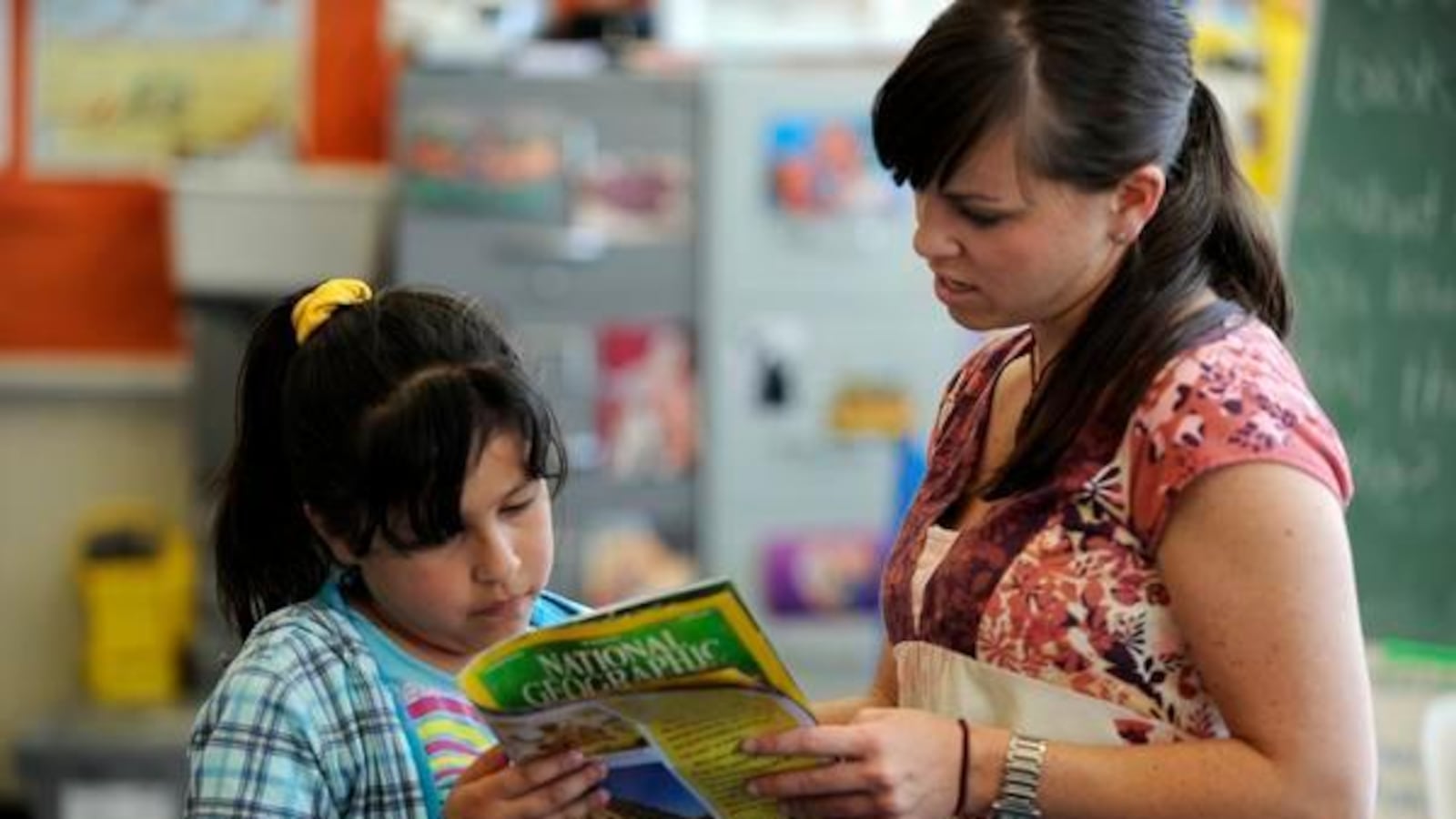When Kim Van Duzer, an elementary school teacher in Brooklyn, had a chance to follow her students from third to fourth grade the next school year, she jumped at the opportunity.
“It was such a positive experience,” she said. “One of the big advantages is starting in September hitting the ground running — you already know the kids and the things they did the previous year and the things they need to work on.”
Now, a new study seems to confirm Van Duzer’s experience. Students improve more on tests in their second year with the same teacher, it finds, and the benefits are largest for students of color.
Repeating teachers is “a beneficial and relatively low-cost policy that should be given due consideration,” write the researchers, Andrew Hill of Montana State University and Daniel Jones of the University of Southern Carolina.
The paper focuses on North Carolina students in grades 3 to 5 who had the same teacher two years in a row. That usually occurred not when a whole class repeated with the same teacher — what’s often called “looping” — but with a small share of students ending up with the same teacher twice, for whatever reason.
How much did that second year with a teacher help? The overall effect was very small, enough to move an average student from about the 50th to the 51st percentile. But even this modest improvement is notable for several reasons.
First, it’s a policy that, at least in theory, doesn’t cost anything or require legislation to implement. Schools, if they choose to, could make looping a habit.
Second, the gains were larger for kids of color than for white students, suggesting that this could make a slight dent in longstanding test-score gaps.
Third, the students who saw the biggest gains had teachers who were lower performing overall, suggesting that having the same students twice may be particularly useful for helping teachers improve.
Fourth, it’s an idea that could affect a lot of students. Just being in a class where many peers were repeating with a teacher seemed to benefit kids who were new to the teacher, the study finds. The researchers think that could be because those teachers’ classroom environments improve during that second year with many of the same students.
That aligns with Van Duzer’s experience, when she had a handful of new students in her looped class. “The other kids were really welcoming to them, and they became fully integrated members of our class community,” she said.
Fifth, there may be other benefits not captured by test score gains. For Van Duzer, being able to pick up existing connections with students’ families was another perk. “It takes a school year to fully develop a relationship with kids and their parents — for everybody to get to know each other, to develop trust, to be able to speak really openly,” she said.
One important caveat: the study can’t prove that if looping were expanded, that the benefits would persist. Past research also isn’t much of a guide because there’s so little out there, but what exists is consistent with the latest study.
A recent analysis found students in rural China scored higher on tests as a result of the approach. Here in the U.S., the best evidence might come from what amounts to the reverse of the policy: having teachers of younger students focus on a single subject, and thus not have a single class of students. In Houston, this led to substantial drops in student test scores and attendance.
These studies suggest early grade teachers do better when they “specialize” in a small group of students, rather than a certain academic subject.
To Van Duzer, who now serves as a math coach at her school, having a firm understanding of what students learned the previous year is crucial and helps explain the findings.
“A lot of times when kids move into a new grade, the teachers are like, ‘You learned this last year!’ and the kids are like, ‘We did?’” she said. “But then if you say certain words … you remind them of certain experiences, like ‘Remember when we studied China and we talked about this?’ and then they’re like ‘Oh yeah, I do remember.’ But if you haven’t been there with them for those experiences, it’s harder to activate that knowledge.”


